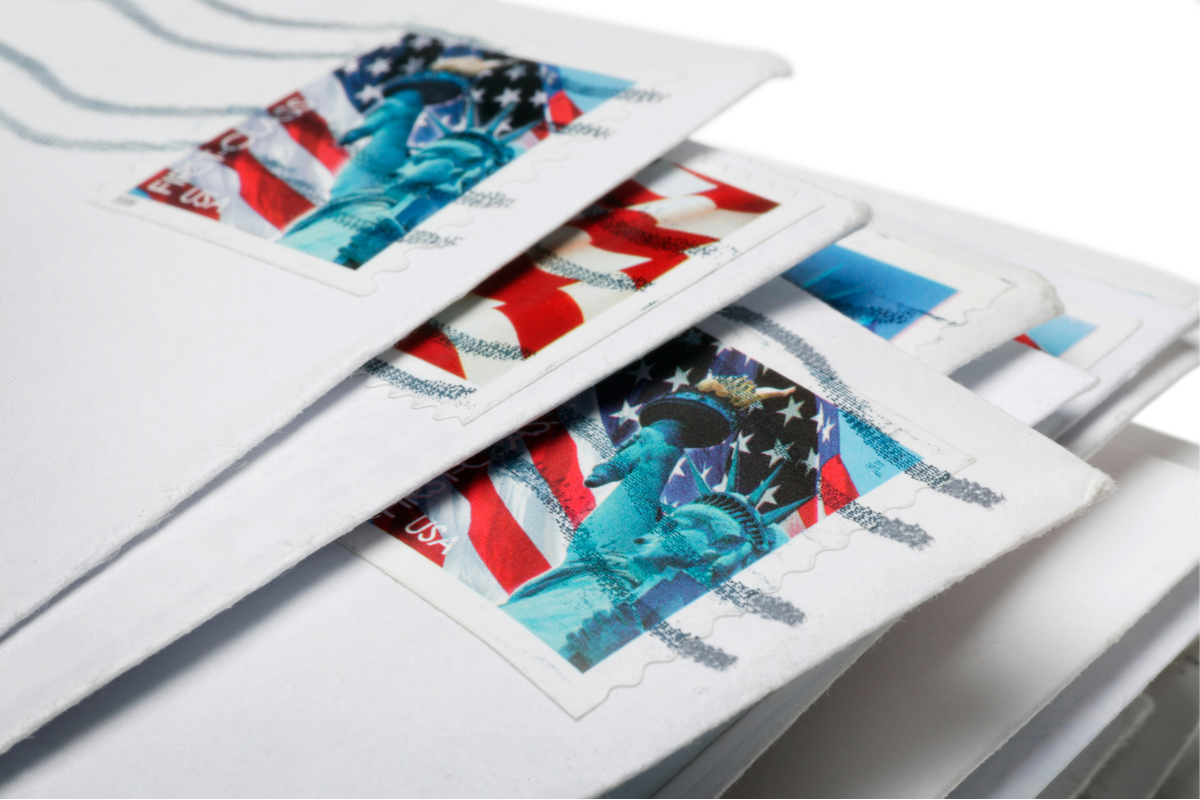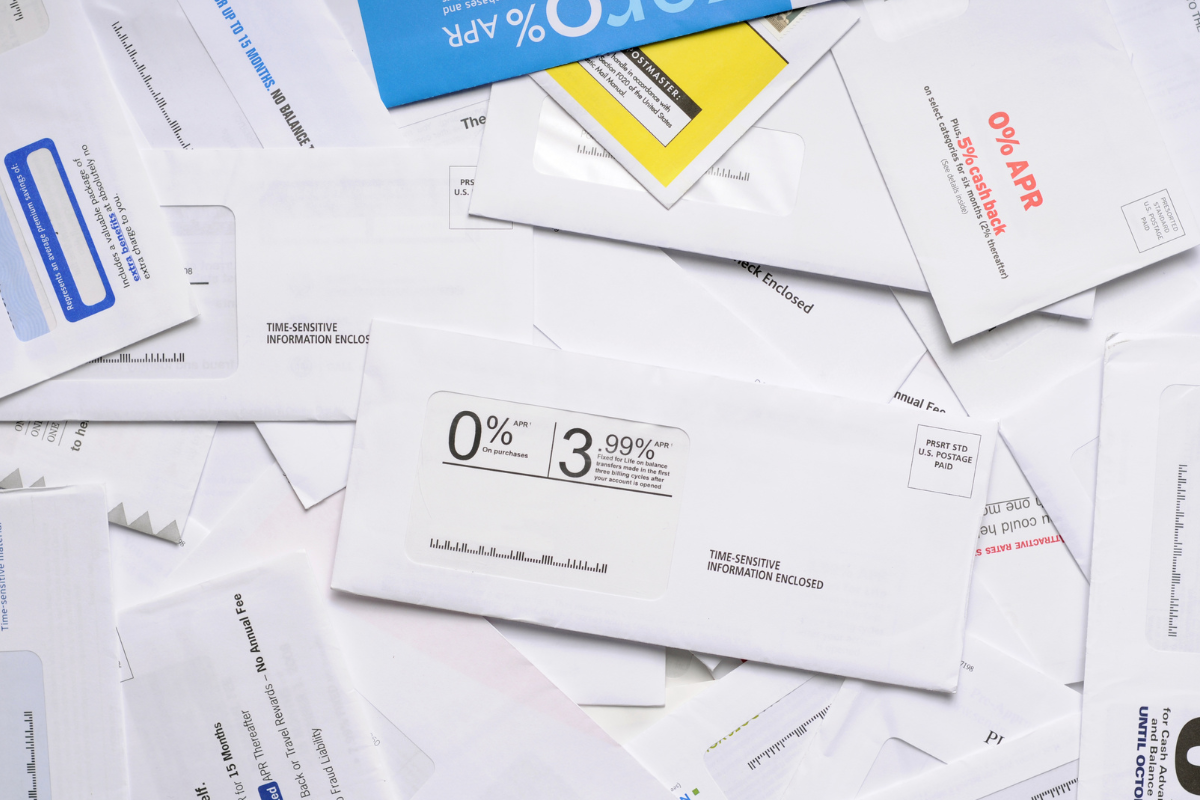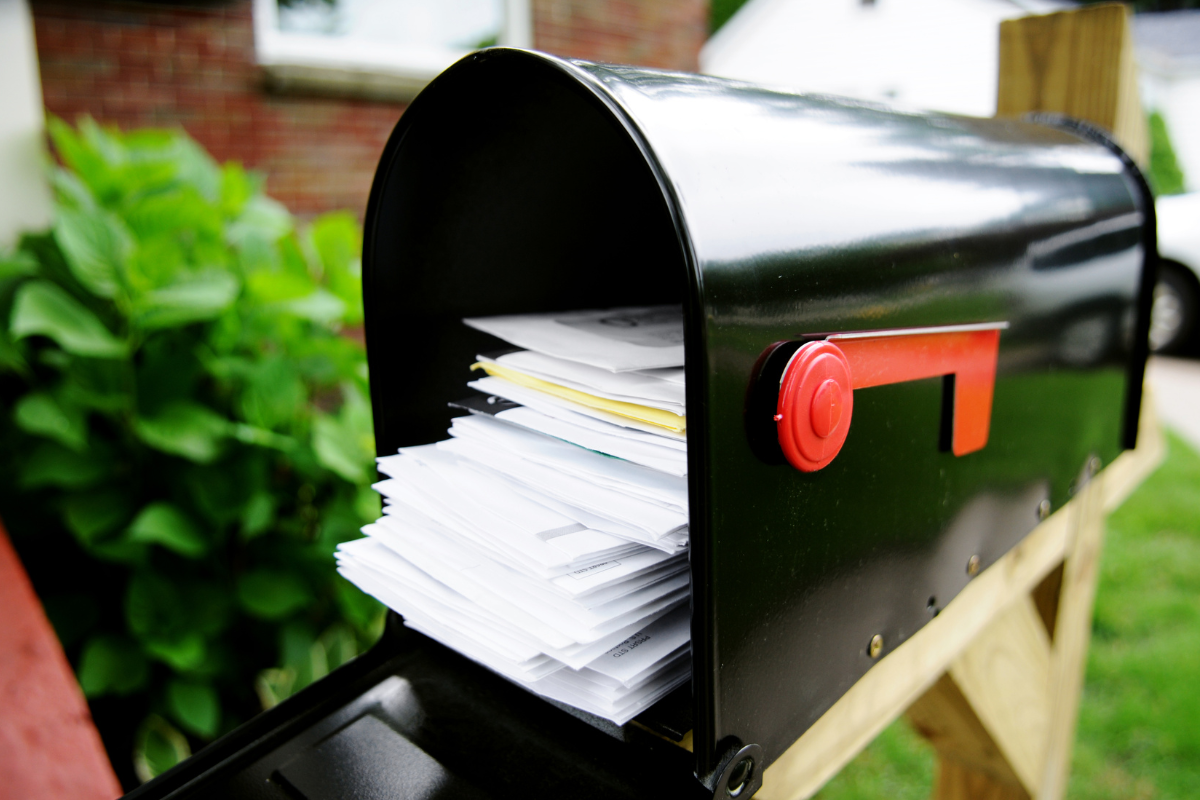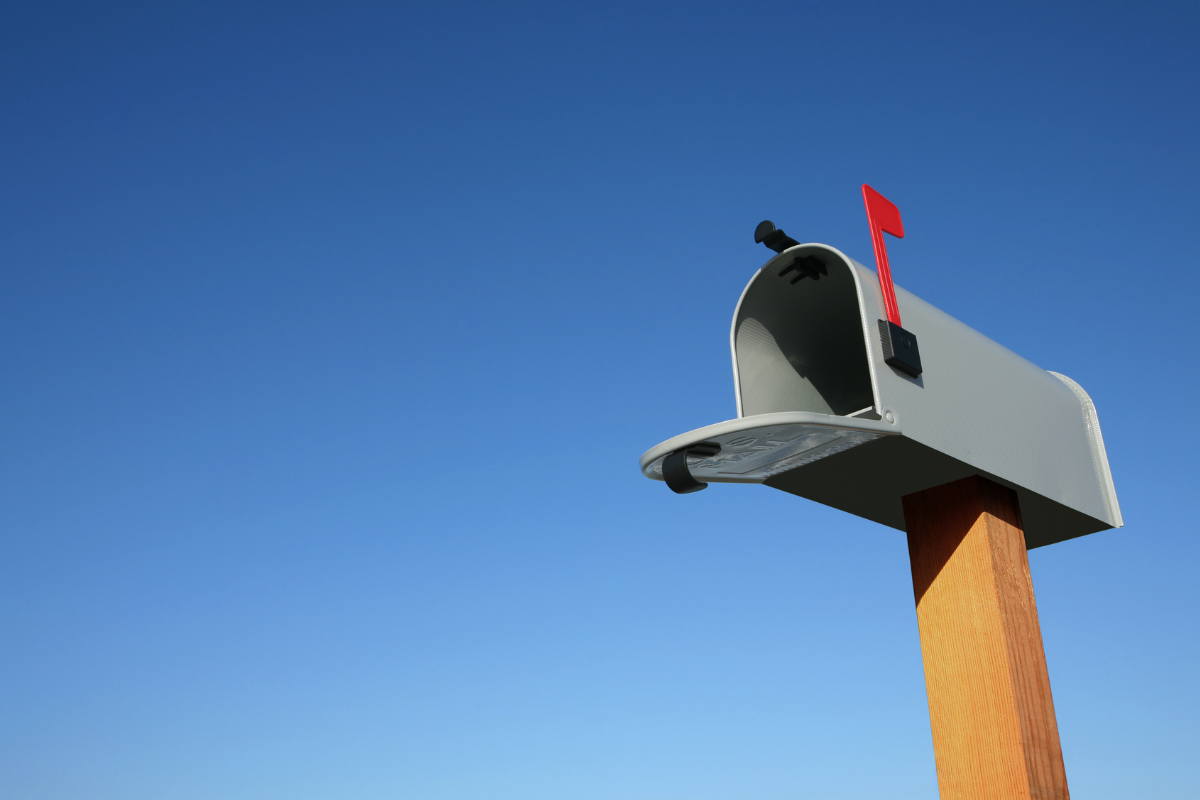Post Disclaimer: This blog reflects the author's personal experience with end-of-life matters and is provided in good faith for informational purposes only. While we aim to provide clear guidance on hard-to-find topics, this content is not legal advice and your use is at your own risk. Estate planning and end-of-life laws vary by location, so please consult your state's laws and seek guidance from a licensed attorney for your specific situation. We make no warranty about the accuracy or completeness of this information, which does not replace professional legal counsel. For more information, please see our full disclaimer.
One common issue families face is unwanted communication addressed to the departed - enter the Deceased Do Not Contact List, a crucial tool that offers relief by helping families prevent these distressing reminders.
Managed by the Data & Marketing Association, this service allows users to block marketing communications by adding a loved one's name to a no-contact registry.
Understanding and utilizing this list quickly can transform a difficult time into a process that respects memory while easing the burden of relentless mail and calls.

Definition of the Deceased Do Not Contact List
When a loved one passes, the influx of mail and calls meant for them can be an unwelcome reminder of their absence.
The Deceased Do Not Contact List (DDNC) aims to alleviate this burden by offering a practical solution.
This service helps families stop marketing communications directed at the deceased by placing their names on a no-contact registry.
Understanding this list can provide peace, aiding closure while managing affairs efficiently.
What is the DDNC?
The DDNC is a registry designed to minimize the distress that families face due to unsolicited marketing communications following the death of a relative.
It helps remove the deceased's contact information from marketing lists, preventing companies from using it in direct mail and other forms of outreach.
This list provides a structured method for families to protect their loved one's name from future contact.
Purpose of the DDNC
The primary purpose of the DDNC is to protect grieving families from the added stress of receiving communications intended for the deceased.
This initiative supports:
- Emotional relief: It spares families from constant reminders that can interfere with the grieving process.
- Privacy: By removing the deceased from marketing lists, it secures personal information, preventing misuse and identity theft.
- Simplicity: It provides a clear and straightforward process for families to follow during a complicated and emotional time.
For more detailed guidance on signing up for the list, you might find this helpful resource.
Organizations Maintaining the DDNC
The Data & Marketing Association (DMA), now part of the ANA, is primarily responsible for maintaining the DDNC.
This organization's role is crucial in overseeing the registry and ensuring compliance with privacy protocols.
The list is a part of DMAchoice, a mail preference service managed by the organization.
Their efforts simplify the process for families, offering a pathway to limit unwanted contact, as outlined on their official site.
The service is supported by the USPS, which outlines procedures for managing mail after a person's death, further assisting families in reducing unwanted communications.

How the DDNC Works
The Deceased Do Not Contact List (DDNC) has a clear objective: to prevent companies from sending marketing communications to deceased individuals.
Here's how it functions, focusing on adding information, required data, and company utilization.
Adding Information to the DDNC
Families need to complete a registration process to add a deceased individual's name to the DDNC.
Here's how you can do it:
- Visit the DMA's website: First, access the registration portal provided by the Data & Marketing Association. You can find more details here.
- Provide Required Information: You must submit critical details about the deceased. This generally includes their name, address, and date of death. The information is used to ensure the person is accurately removed from relevant marketing lists.
- Authentication Fee: A minimal fee, often around $1, is typically required to authenticate the registration. This is used to verify that the request comes from a legitimate source.
- Confirmation Email: After registration, a confirmation email will be sent affirming that the name has been added to the list.
You can also refer to this helpful guide for a more detailed walk-through.
Information Included
When listing a deceased individual on the DDNC, the following personal information is generally required:
- Full Name: Ensure it matches official documents to avoid any complications.
- Address: Multiple past addresses can be submitted to widen the scope of removal.
- Date of Death: This information secures the validity of the claim.
Including accurate data is vital to swiftly eliminating unwanted contacts.
For more information, this page is a helpful resource.
Utilization by Companies
Once a name is registered on the DDNC, companies access this list to cleanse their marketing databases.
Here's how they use it:
- Regular Updates: Companies often update their mailing and contact lists by cross-referencing the DDNC, ensuring they don't contact those who have passed away.
- Compliance: Adhering to privacy laws and consumer preferences, businesses are legally bound to respect the DDNC, which also aids in preventing identity theft.
- Reduction in Communication: By utilizing the DDNC, companies maintain respectful boundaries and show sensitivity towards familial grief by significantly reducing or ceasing all communications.
The USPS also provides additional guidance on managing mail for deceased individuals, complementing the DDNC's processes.
This approach minimizes distress for families and enhances corporate responsibility and privacy protection.

Benefits of the Deceased Do Not Contact List
Implementing the Deceased Do Not Contact List (DDNC) is a thoughtful measure for those managing the affairs of a deceased loved one.
By ensuring that the names of the deceased are effectively removed from marketing databases, this list offers several pragmatic benefits beyond mere convenience.
Reduction of Unwanted Communications
Losing a loved one is challenging enough without the persistent annoyance of junk mail, unsolicited calls, and unwanted emails addressed to them.
The DDNC significantly reduces these unwelcome communications by automatically removing the deceased's information from marketing lists.
Companies access this list once a name is registered to cleanse their marketing databases, ensuring respectful boundaries are maintained.
For more details on this process, visit Deceased Do Not Contact Registration.
Emotional Relief for Grieving Families
Grieving families often speak of the emotional turmoil that can arise when they receive communications intended for their loved ones.
Imagine dealing with a mountain of mail that constantly reminds you of what has been lost.
The relief is palpable when that flow stops, allowing families to focus on healing.
This emotional reprieve can be crucial to navigating the grieving process.
For insights into supporting someone who is grieving, consider reading Helping Someone Who's Grieving.
Prevention of Identity Theft and Fraud
Identity theft can be a nightmare, and unfortunately, the deceased are not immune.
Scammers often target those who have passed, as their inactivity can be exploited for financial gain.
By using the DDNC, you can help protect against this insidious threat.
You are removing your loved one's information from these databases to safeguard against potential fraudsters who seek to capitalize on the departure.
For more on preventing such fraud, the Deceased Do Not Contact Lists provide valuable information.
Incorporating these benefits underscores the importance of registering on the DDNC when handling a loved one's affairs after their passing.
The DDNC isn't merely about reducing mail—it's about protecting dignity, providing peace of mind, and ensuring that the deceased are treated with the respect they deserve.

Limitations of the DDNC
The Deceased Do Not Contact List (DDNC) safeguards grieving families by shielding them from unsolicited communications aimed at their departed loved ones.
However, while this service offers comfort, inherent limitations may affect its efficiency in specific scenarios.
Participation by Companies
One fundamental limitation is that not all companies participate in the DDNC.
While many adhere to privacy standards and leverage the list to cleanse their marketing databases, some organizations may not partake.
This inconsistency can result in continued communication from certain entities.
Without mandatory compliance across industries, families might still receive mail or solicitations.
Thus, the effectiveness of the DDNC largely hinges on corporate cooperation, a factor that can be as unpredictable as the weather.
- Voluntary Participation: Consider the DDNC a neighborhood watch team. It's only as effective as its members' commitment. If a few houses opt-out, the risk looms for those relying on collective vigilance.
For further insight on how participation by companies affects the effectiveness of the DDNC, refer to this discussion on company compliance.
Registration Time Lag
Time can be both a healer and a hindrance. In the case of the DDNC, the registration time lag is a hurdle.
Once a family registers a loved one, it can take a while for companies to update their lists.
This delay means unwanted mail might slip through the cracks, offering unwelcome reminders during mourning.
Much like sending traditional mail in an age of instant messaging, the wait can feel longer than expected.
- Processing Delays: The time it takes for registration to become fully effective varies, often influenced by how frequently companies update their marketing information.
For specifics on managing posthumous mail and minimizing these time lags, review the USPS's outline on handling mail for deceased individuals.
Communication Types Not Covered
The DDNC is not a universal shield. It specifically targets marketing communications, but other types of communications may still reach the mailbox or inbox.
These can include:
- Legal Correspondence: Documents like final estate settlement notices or healthcare-related information often bypass the marketing filter of the DDNC.
- Social Contacts: Personal letters from friends or acquaintances, unaware of the passing, may continue to arrive.
Furthermore, it does not address digital solicitations such as emails unless specified during registration.
Think of it as a fence rather than a fortress—protective yet not impervious.
For comprehensive details about dealing with mail, explore how to manage mail for a deceased person.
In understanding these limitations, families can more strategically navigate the use of the DDNC as part of their broader approach to managing posthumous matters.

How to Register a Deceased Person on the DDNC
When managing a loved one's affairs, reducing unwanted mail and calls through the Deceased Do Not Contact List (DDNC) can ease the journey.
This list, managed by the Data & Marketing Association, helps keep your loved one's memory respected by preventing unnecessary communications.
Step-by-Step Registration Guide
Adding a deceased person's information to the DDNC involves a few straightforward steps.
Here's a clear path for you:
- Visit the Registration Portal: Head over to the Data & Marketing Association's site. This is where the registration process begins.
- Enter Necessary Details: You must complete a form with essential information about the deceased. Typically, this includes their full name, address, and date of death.
- Pay the Authentication Fee: A small fee, usually about $1, is required to authenticate the registration. This confirms the legitimacy of your request and helps ensure privacy.
- Receive Confirmation: Once you've submitted the form, look for a confirmation email. This verifies that the deceased individual has been successfully added to the list.
For detailed guidance, see How To Sign Up For The Deceased Do Not Contact List.
Required Documentation
Ensuring you have the correct documents is crucial for a smooth registration.
Here's what you typically need:
- Death Certificate: This is essential for verifying the passing of your loved one. Copies can usually be obtained from the vital records office in the state where the death occurred.
- Proof of Relationship: Sometimes, showing how you're related ensures your eligibility to register the individual. Documents like a birth certificate or family tree can be helpful.
- Your Identification: A government-issued ID such as a driver's license or passport may be necessary to confirm your identity.
For more information on required documentation, check out resources from USA.gov on reporting a death.
Processing Timeframe
Waiting for the process to complete can feel like forever, particularly when you want closure.
Here's what you can expect:
- Processing Period: Typically, the registration takes effect within about three months. During this time, companies that use the DDNC will update their systems.
- Interim Communications: Some residual communication may slip through during the processing window. It's crucial to monitor this and contact companies directly if needed.
For additional information on managing these timeframes, an insightful read is How to Stop or Forward Mail for the Deceased.
Understanding this process and preparing the required documents can make reducing mail and calls a manageable task during challenging times.

Alternative Methods to Reduce Unwanted Contact
Dealing with the death of a loved one is hard enough without the added stress of unwanted contact.
Despite services like the Deceased Do Not Contact List, other approaches can also help ensure peace during this transitional phase.
Contacting Major Companies and Creditors Directly
It's often necessary to personally notify major companies and creditors about a loved one's passing.
Direct communication can halt mailings and collections promptly.
Start by:
- Visiting company websites for contact forms or customer service numbers, often found in sections dedicated to customers dealing with a loved one's death.
- Keeping a record of all correspondence for follow-up. Documentation can prevent future misunderstandings and provide backup if unwanted contact continues.
- Consider reaching out via phone or email to expressly request cessation of communication. Each company may have different requirements, but all are legally bound to comply once correctly notified.
A death certificate and proof of your authority (like executor documents) may be necessary.
This ensures companies comply effectively with your requests. For more detailed insights, explore responsibilities when dealing with deceased debts.
Cancelling Subscriptions and Memberships
Subscriptions, like magazines or streaming services, can persist, resulting in unnecessary expenses.
Here's a simplified process for handling this:
- List Down Accounts: Gather all subscription services and memberships your loved one was part of.
- Contact Each Provider: Notify them of the death and request account closure. This will often require proof of death and your executor status.
- Monitor Statements: Monitor bank or card statements for recurring charges that continue despite cancellation.
Proactive management is critical. Most companies are empathetic and will guide you through their specific procedures.
Valuable resources like this guide on subscription cancellations can further assist.
Using Mail Forwarding Services
Mail forwarding is a temporary but beneficial tool in managing posthumous correspondence:
- Post Office Instructions: Visit your local post office to file a request for mail forwarding. You might need to present a death certificate and ID.
- Decide on Duration: Choose a forwarding period that suits the finalization of estate matters. This ensures essential mail isn't lost in transition.
Mail forwarding consolidates correspondence and provides a buffer as you settle affairs.
For more information on this, refer to the guidance on forwarding mail.
In conjunction with the DDNC, these steps form a comprehensive approach to minimizing distress and ensuring you can focus on what truly matters during such a sensitive time.

Legal Aspects of the Deceased Do Not Contact List
Understanding the legal framework surrounding communication with deceased individuals is crucial when managing a loved one's affairs.
The Deceased Do Not Contact List (DDNC) is a protective measure within this context.
Relevant Laws
The laws concerning communication with deceased individuals are designed to respect privacy and dignity while preventing misuse of personal information.
Here are a few key legal points:
- Federal Privacy Laws: The Health Insurance Portability and Accountability Act (HIPAA) protects the health information of deceased individuals for 50 years. It ensures confidentiality and limits the release of medical details without proper consent.
- Electronic Communications Privacy Act (ECPA): This federal law governs access to electronic communications. It restricts disclosure of communications unless legally authorized. Learn more here.
- Probate and Fiduciary Access: Under some state laws, fiduciaries may access electronic communications in settling estates, posthumously offering some level of control over digital information.
These laws create a framework that businesses and other entities must navigate carefully to avoid unauthorized contact with or use of a deceased individual's information.
Penalties for Violations
Ignoring or breaching the regulations associated with the DDNC can lead to significant repercussions for companies:
- Financial Penalties: Companies that fail to comply with do-not-contact directives can face stiff fines. For instance, violations of the National Do Not Call Registry can result in financial penalties, underscoring the importance of adhering to privacy standards.
- Legal Action: Persistent or intentional breaches might lead to legal action. Families of deceased individuals can seek redress if a company fails to respect no-contact requests or mishandles personal information.
- Reputational Damage: Beyond monetary fines, companies risk damaging their reputations. Trust is paramount in the eyes of both consumers and regulators and failing to comply with DDNC protections can erode public trust.
Navigating the complex legal landscape demands diligence and respect for the deceased's privacy, ensuring ethical and legal compliance at every step.

FAQs: What is the DDNC List?
It's natural to have questions when navigating the process of placing a loved one's name on the Deceased Do Not Contact List (DDNC).
Below, we address some of the most commonly asked queries to provide clarity and support.
Is There a Cost to Register?
Understanding the fees associated with registering for the DDNC is essential.
Fortunately, the process is straightforward and comes with minimal cost:
- Authentication Fee: To add a name to the list, there is typically a nominal fee. This fee, often around $1, is used to verify the authenticity of the request. The small cost ensures that the list remains accurate and reliable by confirming legitimate requests. For more details, the Deceased Do Not Contact Registration page provides comprehensive information on the registration process.
Duration on the List
Once a name is placed on the DDNC, how long it remains there might be a concern for families seeking ongoing peace:
- Time Frame: An individual's name generally remains on the list indefinitely. Companies are reminded not to send marketing communications to the deceased, providing long-term relief. The list is updated regularly to reflect new entries, ensuring its effectiveness. Additional insights can be found on this helpful page.
Removing a Name from the List
Sometimes, circumstances change, and you might need to remove a name from the DDNC:
- Process of Removal: While uncommon, removing a name involves a specific process. Typically, the request must be made through the same platform used for registration. You may need to provide verification documents to confirm the legitimacy of the removal request. Resources such as this guide provide valuable information on how to proceed if removal is necessary.
These answers aim to clarify key DDNC questions, making it easier for families to make informed decisions during a challenging time.
Understanding these aspects can help ensure a smooth process, allowing you to focus on what truly matters.

Wrap-up: What is the DDNC List?
Protecting the dignity of a deceased loved one is paramount, and the Deceased Do Not Contact List offers a vital service to manage this aspect.
It reduces the burden of unwanted communications, ensuring that unnecessary reminders don't disrupt the grieving process.
This list not only provides emotional relief but also offers practical privacy benefits.
It aids in preventing identity theft and simplifies managing an estate.
Registering your loved one's details on the Deceased Do Not Contact List is essential.
It's an easy yet crucial measure that can help to secure peace of mind during an already challenging time.
Engage with the process today, ensuring that respect and privacy remain at the forefront of managing posthumous matters.
Check out the Up & Doing glossary page for an alphabetical listing of key terms related to estate administration, funeral planning, and other end-of-life topics.




